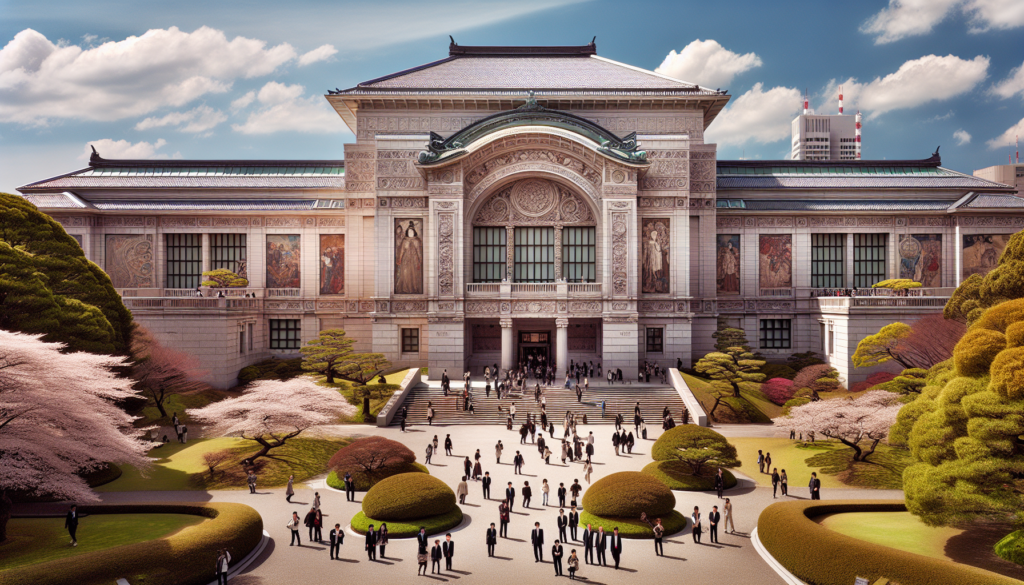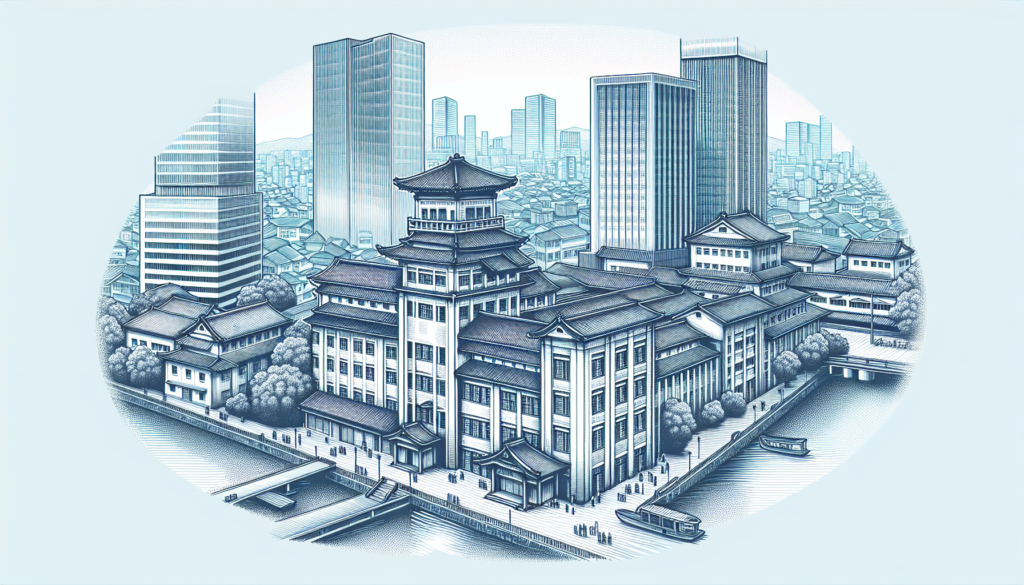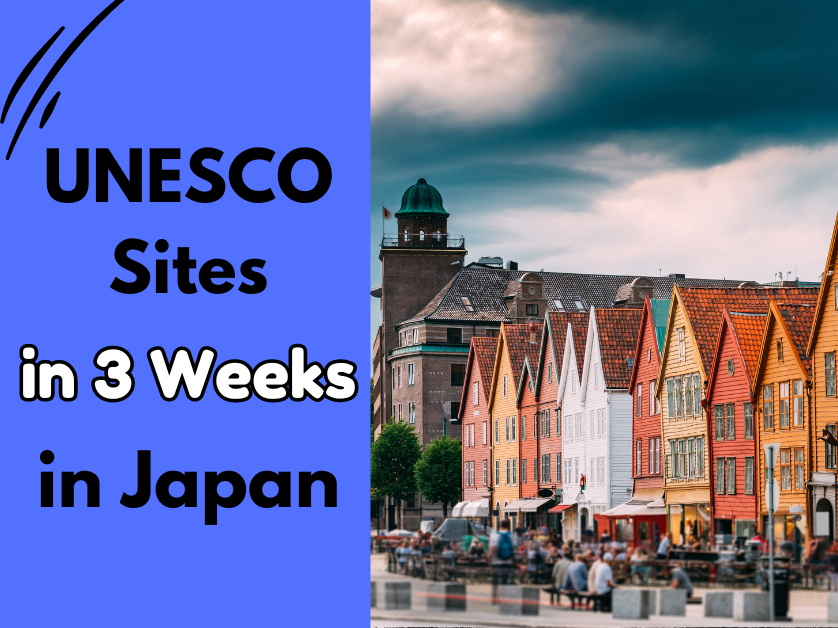Embarking on a whirlwind adventure through Japan, I set out to explore the country’s rich cultural heritage by visiting 10 UNESCO World Heritage Sites in just three weeks. From the iconic temples of Kyoto to the historic monuments of Hiroshima, each site offered a glimpse into Japan’s profound history and architectural marvels. Navigating bustling city streets and serene countryside alike, I marveled at the intricate craftsmanship of ancient shrines.

The tranquility of Zen gardens, and the resilience of structures that survived centuries. As an expert traveler, I meticulously planned my itinerary to maximize my time and immerse myself fully in Weeks in Japan diverse landscapes and cultural tapestry, creating memories that will last a lifetime and a deeper appreciation for the wonders of this remarkable country. The best time to visit Beach Inn is during the spring or early summer months when the weather is warm and pleasant. Avoid peak tourist season in the summer to enjoy a quieter atmosphere.
Table of Contents
JAPAN UNESCO SITES MAP
Discover the wonders of Japan through its UNESCO sites map, showcasing the country’s rich cultural and natural heritage. From the serene beauty of Mount Fuji to the ancient temples of Kyoto, each site tells a unique story of Japan’s history and tradition. Spend weeks in Japan exploring these remarkable landmarks, immersing yourself in the vibrant culture and breathtaking landscapes that make this country truly extraordinary. Whether you’re drawn to the historic charm of Hiroshima’s Peace Memorial or the tranquil gardens of Kamakura, Japan’s UNESCO sites offer something for every traveler to marvel at and cherish.
FROM TOKYO
From Tokyo, the bustling heart of Weeks in Japan, adventure awaits around every corner. Whether you’re exploring ancient temples or modern skyscrapers, Tokyo offers an unforgettable experience for all ages. Spend your days wandering through vibrant street markets, indulging in delicious sushi, or immersing yourself in the rich history of the city. With so much to see and do, weeks in Japan fly by in a whirlwind of excitement and discovery. Get ready to create memories that will last a lifetime in this dynamic metropolis.
1. NATIONAL MUSEUM OF WESTERN ART

The National Museum of Western Art in Japan stands as a beacon of cultural richness and artistic heritage. With its diverse collection spanning centuries, visitors are immersed in the beauty and creativity of Western art. From classic masterpieces to contemporary works, every piece tells a story of human expression and ingenuity. Whether you’re an art enthusiast or simply curious, a visit to this museum promises an enriching experience that transcends time and borders. For those spending Weeks in Weeks in Japan, a trip to this museum is a must for a deeper understanding of global art history.
2. SHRINES & TEMPLES OF NIKKO
Nestled amidst the serene landscapes of Japan lies the captivating allure of Nikko’s shrines and temples, offering a glimpse into the country’s rich cultural tapestry. Exploring Nikko’s spiritual gems is a must for anyone spending Weeks in Japan. Each shrine and temple stands as a testament to Japan’s intricate craftsmanship and profound spirituality, inviting visitors to immerse themselves in centuries of tradition and reverence. From the intricate carvings of Toshogu Shrine to the tranquil ambiance of Rinno-ji Temple, Nikko’s sacred sites promise an unforgettable journey through Weeks in Japan spiritual heartland.
3. FUJISAN
Fujisan, also known as Mount Fuji, is a majestic symbol of Japan’s natural beauty and cultural significance. Its iconic silhouette dominates the landscape, attracting millions of visitors each year. For those fortunate enough to spend weeks in Weeks in Japan, a journey to Fujisan is often a highlight of their trip. Standing at 3,776 meters tall, this dormant volcano offers breathtaking views from its summit, providing a sense of awe and tranquility. Whether admiring its splendor from afar or trekking its slopes, Fujisan leaves an indelible mark on all who encounter its magnificence.
FROM KYOTO
From Kyoto, visitors embark on an enchanting journey through Japan’s rich cultural tapestry. Whether you’ve just arrived or have spent weeks in Japan, Kyoto offers a timeless allure. With its ancient temples, serene gardens, and traditional tea houses, every corner whispers tales of centuries past. Immerse yourself in the graceful rituals of tea ceremonies or wander through the vibrant markets bustling with local delicacies. Kyoto, with its timeless charm, promises an unforgettable experience for travelers of all ages.
4. HISTORIC MONUMENTS OF ANCIENT KYOTO
The historic monuments of ancient Kyoto stand as timeless witnesses to Weeks in Japan rich cultural heritage. Spanning centuries, these revered sites hold stories of emperors, samurais, and artisans, echoing the whispers of a bygone era. As you explore Kyoto’s streets, you’re immersed in a tapestry of tradition and innovation. From the serene beauty of Kinkaku-ji Temple to the imposing grandeur of Nijo Castle, each monument invites you to journey through Japan’s storied past. For travelers spending weeks in Weeks in Japan, delving into Kyoto’s history is an enriching experience, offering a deeper understanding of the nation’s soul.
5. HISTORIC MONUMENTS OF ANCIENT NARA

Exploring the historic monuments of ancient Nara is an enriching experience that transports visitors back in time. Nestled in the heart of Weeks in Japan, these ancient treasures offer glimpses into a bygone era, captivating travelers with their timeless beauty and cultural significance. From the majestic Todai-ji Temple, home to the iconic Great Buddha, to the serene Kasuga Taisha Shrine adorned with thousands of lanterns, each site tells a story of Japan’s rich heritage. Spending weeks in Weeks in Japan allows ample time to delve into the depths of Nara’s historical wonders, unlocking the secrets of its past and fostering a deeper appreciation for its enduring legacy.
6. BUDDHIST MONUMENTS IN THE HORYU-JI AREA
The Horyu-ji area boasts a rich array of Buddhist monuments that captivate visitors from all walks of life. Nestled in the serene landscape, these ancient treasures stand as testaments to Japan’s profound spiritual heritage. For travelers spending weeks in Weeks in Japan, a visit to this sacred site offers a glimpse into the country’s deep-rooted traditions and cultural legacy. From the majestic pagodas to the intricate sculptures, every corner exudes a sense of tranquility and reverence. Exploring these monuments provides a profound insight into the essence of Japanese Buddhism and its profound impact on the nation’s history and identity.
FROM OSAKA
If you’re exploring Japan, don’t miss out on Osaka. This vibrant city is a blend of tradition and modernity, offering something for everyone. Spend your days wandering through historic temples and bustling markets, or indulge in Osaka’s renowned culinary scene. Whether you’re strolling through the serene gardens of Osaka Castle or sampling street food delights in Dotonbori, you’re sure to be captivated by the city’s charm. Make the most of your weeks in Japan by immersing yourself in the dynamic energy of Osaka.
7. HIMEJI CASTLE
Himeji Castle, a cultural gem nestled in Weeks in Japan Hyogo Prefecture, stands as a testament to the country’s rich history and architectural brilliance. Its striking white exterior, resembling a majestic bird in flight, has earned it the nickname “White Heron Castle.” Visitors flock from all corners of the globe to marvel at its grandeur and intricate design. Exploring the castle grounds, one can’t help but feel transported back through time, imagining the stories of samurais and shoguns who once roamed its halls. For those embarking on a journey through Japan, spending a few weeks in this enchanting country would be incomplete without a visit to Himeji Castle, a true symbol of Weeks in Japan enduring legacy.
8. ITSUKUSHIMA SHINTO SHRINE
Located on the picturesque island of Itsukushima in Weeks in Japan, the Itsukushima Shinto Shrine stands as a testament to the country’s rich cultural heritage. This sacred site, renowned for its iconic “floating” torii gate, attracts visitors from all corners of the globe. Steeped in tradition and history, the shrine offers a serene retreat where visitors can immerse themselves in the beauty of Japanese spirituality. Exploring Itsukushima Shrine is a must-do for anyone spending weeks in Weeks in Japan, as it provides a profound insight into the country’s religious practices and architectural marvels.
9. HIROSHIMA PEACE MEMORIAL
The Hiroshima Peace Memorial stands as a poignant reminder of the devastating impact of war and the enduring pursuit of peace. Located in Hiroshima, Japan, this solemn monument pays tribute to the lives lost during the atomic bombing of the city in 1945. Visiting the Hiroshima Peace Memorial evokes a profound sense of reflection and remembrance, offering visitors a glimpse into the horrors of nuclear warfare and the resilience of the human spirit. During my Weeks in Weeks in Japan, witnessing this memorial was a humbling experience, underscoring the importance of promoting peace and understanding in our world.
10. MOZU MOUNDED TOMBS
Mozu Mounded Tombs, located in Japan, stand as remarkable testaments to ancient burial practices. These burial mounds, dating back thousands of years, offer intriguing insights into the beliefs and customs of early Japanese societies. Over the Weeks in Japan, visitors can explore these historical wonders, marveling at their impressive size and meticulous construction. These tombs, scattered across the landscape, symbolize reverence for ancestors and highlight the craftsmanship of bygone eras. Exploring the Mozu Mounded Tombs offers a captivating journey through Weeks in Japan rich archaeological heritage.
TOMIOKA SILK MILL (FROM TOKYO)

Tomiōka Silk Mill, located in Tokyo, is a testament to Japan’s rich industrial heritage. This historic site dates back to the Meiji era and played a pivotal role in the nation’s silk industry. Visiting here during your weeks in Japan offers a fascinating glimpse into the country’s past, where you can witness the intricate process of silk production firsthand. From the buzzing looms to the serene surroundings, Tomiōka Silk Mill encapsulates the spirit of craftsmanship and innovation that defines Japan’s industrial legacy.
SHIRAKAWA-GO (FROM TOKYO OR KYOTO)
Shirakawa-go, nestled in the heart of Japan, is a picturesque village renowned for its traditional Gassho-style houses. If you’re planning your trip from Tokyo or Kyoto, allocate a few days to truly immerse yourself in its charm. From Tokyo, you can take a bullet train to Toyama and then a bus to Shirakawa-go, while from Kyoto, a direct bus service is available. Spend a couple of days exploring the quaint streets, marveling at the unique architecture, and savoring local delicacies. In just a few days, you’ll create memories to cherish for a lifetime amidst the serene beauty of Shirakawa-go.
SACRED SITES AND PILGRIMAGE ROUTES IN THE KII MOUNTAIN RANGE (FROM OSAKA)
The Kii Mountain Range, a UNESCO World Heritage Site, boasts sacred sites and pilgrimage routes revered for centuries. Starting from Osaka, visitors embark on a spiritual journey, immersing themselves in the rich history and cultural significance of this region. Over the course of several weeks in Japan, pilgrims traverse ancient paths, such as the Kumano Kodo and the sacred grounds of Koyasan. These routes offer profound experiences, connecting travelers with nature, tradition, and the divine, making each step a pilgrimage of the soul.
There are many locations that make up this UNESCO site – here are a few of the easiest to aim for:
- Kumano Kodo Pilgrimage Routes:
- Experience a taste of the sacred Kumano Kodo pilgrimage by tackling the Nakahechi route, starting from Osaka.
- Begin your journey by catching a train to Kii-Tanabe, then transfer to a local bus to reach the trailheads.
- Follow the Nakahechi route to the revered Kumano Hongu Taisha, one of Kumano’s three grand shrines.
- Whether for a day trip or an unforgettable overnight stay, the Nakahechi route promises stunning landscapes and spiritual encounters.
- Nachi Taisha Grand Shrine and Nachi Waterfall:
- Accessible from Osaka via a scenic train ride to Kii-Katsuura, Nachi Taisha sits majestically against the backdrop of Japan’s tallest waterfall.
- Explore the spiritual significance of Nachi Taisha, a revered shrine nestled amidst lush greenery and cascading waters.
- Marvel at the awe-inspiring beauty of Nachi Waterfall, a symbol of natural grandeur and spiritual reverence.
- Delve into the rich cultural heritage and serene ambiance of this sacred site during your journey from Osaka.
- Mount Koya (Koyasan):
- Closer to Osaka, Mount Koya offers a unique opportunity to delve into Japanese spirituality and tradition.
- Accessible by train and cable car, Mount Koya beckons travelers to explore its serene temples and peaceful surroundings.
- Immerse yourself in the tranquil atmosphere of temple lodgings, where you can experience monk-led meditation sessions and traditional rituals.
- With over 100 temples to discover, Mount Koya invites visitors to embark on a journey of self-discovery and spiritual renewal, just a short trip away from Osaka.
Conclusion
In conclusion, my three-week journey exploring 10 UNESCO sites across Weeks in Japan was an enriching and unforgettable experience. Each site offered a unique glimpse into Japan’s rich cultural and historical heritage, from ancient temples to stunning natural landscapes. This adventure not only deepened my appreciation for Japan’s diverse heritage but also provided me with lasting memories and insights. I encourage fellow travelers to embark on similar journeys to discover the profound beauty and significance encapsulated within these UNESCO World Heritage sites.
Common Question of Weeks in Japan
Who has visited the most UNESCO sites?
The most UNESCO world heritage site visits in 24 hours is 23 and was achieved by Myrthe Sentener and Erik Sentener (both Netherlands) from 28-29 September 2021. This record was previously broken in 2019.
What is Japan’s first Unesco World Heritage Site?
In December 1993, Japan’s first World Cultural Heritage sites were registered: the Buddhist Monuments in the Hōryūji Temple area (Nara Prefecture) and Himeji-jō Castle (Hyōgo).
What is the heritage of Japan?
Japan Heritage is the real Japan. The unique culture and traditions shaped by the nature, climate, and people of Japan over centuries can be found in every corner of this island nation. Japan Heritage ranges from iconic cultural properties known around the world to little-known gems far from the beaten track.
Is Japan very expensive to travel?
Japan has a reputation as an expensive place to travel, but it’s an image that doesn’t hold up on the ground. With a little strategy, a visit can be very reasonable – budget-friendly, even. Many of the country’s major sights, for example, cost nothing, and free festivals take place year-round.
How much is a meal in Japan?
How much is an average dinner in Tokyo? A meal at a more average restaurant costs roughly between 1000 and 3000 yen, while there is no upper price limit when it comes to high-class restaurants such as ryotei. During lunch hours, many restaurants offer inexpensive teishoku (set menus) at around 1000 yen.







